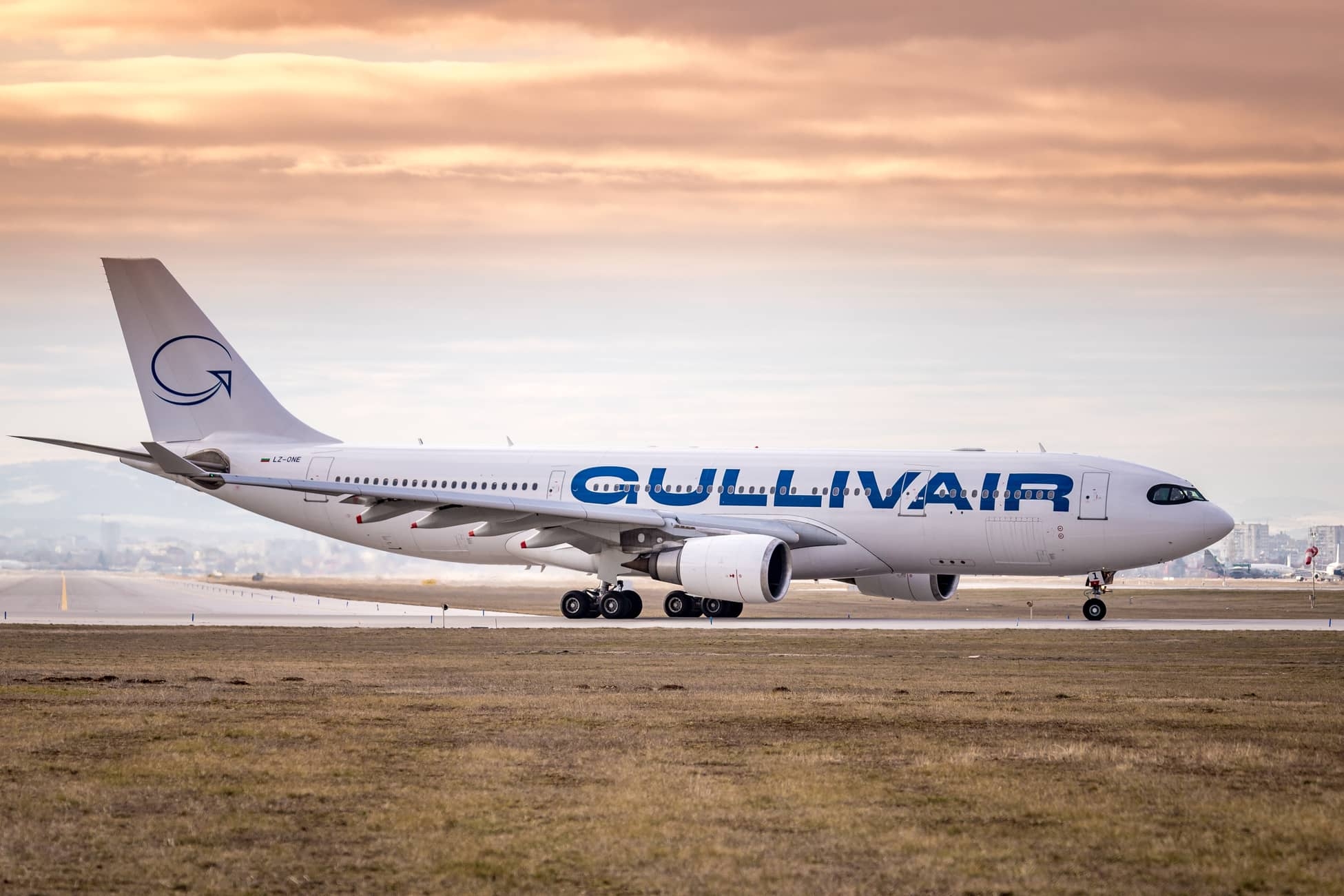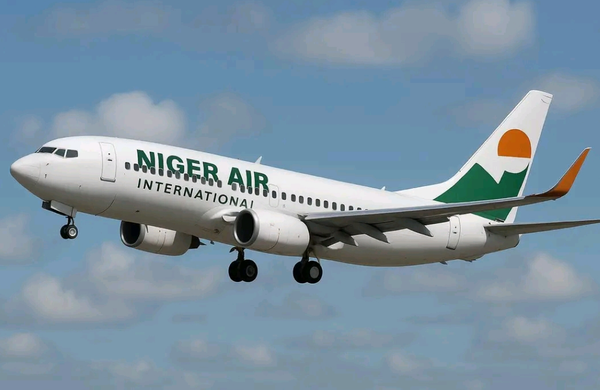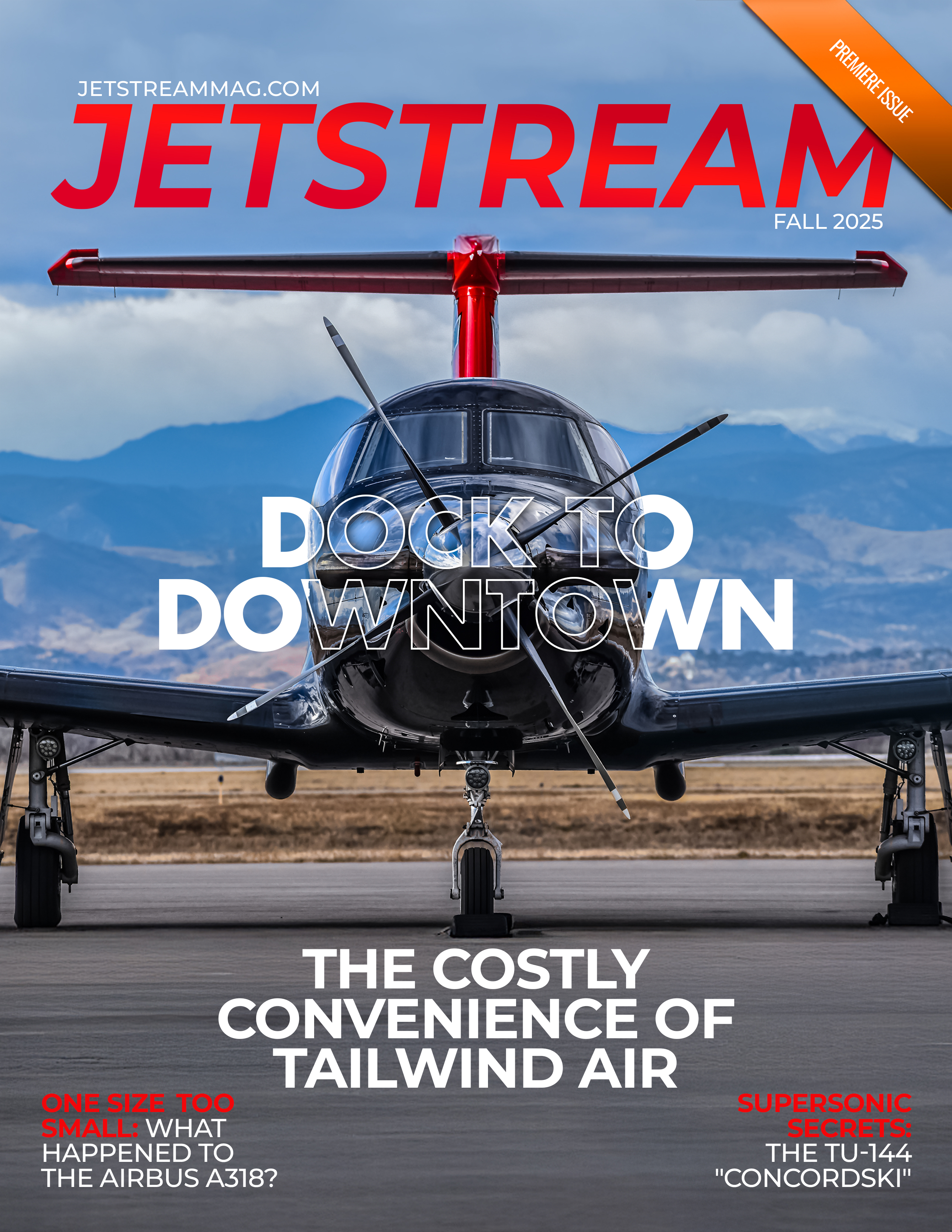Portions of this article were created with assistance from AI tools to help with research, drafting, or copy editing. A human editor reviewed the work, verified key facts, and approved the final version.
AI-assisted content
The recent announcement by GullivAir seeking year-round service clearance to New York is poised to significantly alter the aviation landscape. As a carrier established in Bulgaria, GullivAir’s expansion into the U.S. market signifies not only its growth ambitions but also speaks volumes about current trends in international aviation. Partnering with Arkia, an Israeli airline known for its focus on leisure travel, enhances the strategic implications of this move. Their request comes at a time when aviation routes and services continue to evolve, reflecting changing consumer demands.

Wet-leasing plays a crucial role in this context, allowing airlines the flexibility to respond to market demands without the typical capital outlay associated with purchasing new aircraft. This method enables GullivAir to offer its services efficiently, leveraging Arkia's existing resources to enhance operational capacity. Thus, this partnership is anchored in a savvy understanding of the dynamics that characterize today’s highly competitive aviation sector.
Moreover, this venture into New York, a major aviation hub, is significant as it may lead to increased competition among carriers operating transatlantic routes. As leisure travel rebounds post-pandemic, the strategic cooperation between GullivAir and Arkia could signal a shift in passenger options available to travelers. Understanding why this move is pivotal can help aviation professionals anticipate future trends and prepare accordingly.
Understanding Wet-Lease Agreements
Wet-lease agreements are pivotal mechanisms within the aviation industry that allow one airline to lease an aircraft along with its operating crew to another airline. In contrast to dry-lease agreements, where only the aircraft is leased, wet-leases come with significant operational advantages. This arrangement is particularly valuable for airlines requiring immediate access to additional capacity without the long-term commitment associated with purchasing or dry-leasing aircraft.

The benefits of wet-leasing for airlines, especially in international operations, are manifold. Airlines can quickly scale their operations to meet seasonal demand, test new markets without significant investments, and maintain operational flexibility amidst fluctuating passenger volumes. This model is especially useful in leisure travel, where demand can vary significantly based on time of year, economic conditions, and global events.
Additionally, wet-leasing allows airlines to tap into established routes or gain access to expertise and specialty aircraft that they might not normally operate. This can be particularly attractive in an ever-evolving market where free-market opportunities often arise unexpectedly. Therefore, understanding how wet-leases function is crucial for aviation stakeholders, helping them make informed decisions about capacity planning and operational efficiency.
Details of GullivAir's Proposed Operations
GullivAir's recent filing with US regulators reveals its intent to establish a continuous scheduled service from various international locations to New York. The specifics of their proposal include operating a fleet that includes Airbus A330 aircraft, which is well-suited for the demands of transatlantic travel. The targeted schedule suggests that they will offer multiple frequencies throughout the week, enabling passengers flexibility in selecting travel dates.
Notably, this service is poised to cater to not just leisure travelers from Bulgaria and Israel, but also to business passengers who seek connections through New York. By focusing on a route that connects key international hubs, GullivAir is positioning itself as a notable player in a competitive market. The integration of this service is likely to benefit not just the airline itself, but also passengers who will enjoy increased options and potentially more competitive pricing.

This strategic move may also bring about implications for the rest of the aviation market. The inclusion of GullivAir in the mix could compel existing airlines to enhance their service offerings and pricing models to maintain competitiveness. Overall, the operational specifics of this proposed service signal a keen awareness of market dynamics and an intention to fill a growing demand for international travel.
US Regulatory Approval Process for Foreign Carriers
To operate in the US, foreign carriers like GullivAir must navigate a regulatory framework established by the Department of Transportation (DOT). The approval process for granting foreign carriers such permissions involves an assessment of several key factors. These can include the financial fitness of the airline, compliance with safety and operational standards, and the operational plans as outlined in their application.
The DOT evaluates the applicant's ability to provide reliable and safe service, which involves scrutinizing maintenance records, crew qualifications, and aircraft safety measures. Additionally, they take into account the potential market impacts of allowing a new competitor into the landscape, including how it might enhance consumer choice or affect fares.
This rigorous evaluation process underscores the importance of adhering to regulatory compliance in international aviation. It ensures that only those carriers capable of maintaining high operational standards are granted authority to operate within US airspace. For GullivAir, this means ensuring that all filings are meticulously prepared and backed by comprehensive planning ahead of the anticipated launch.
The Competitive Landscape: GullivAir and Arkia's Position
GullivAir's entry into the transatlantic aviation market alongside Arkia places the two airlines in a unique competitive position. The leisure travel sector, which has garnered renewed interest post-pandemic, presents a ripe opportunity for both airlines to capitalize on growing passenger numbers. Their capabilities to offer routes between Bulgaria, Israel, and the US set them apart from primary competitors that focus heavily on business travel.

In this competitive environment, GullivAir and Arkia’s partnership might pose challenges for established carriers. Their combined operational strategies could lead to innovative offerings and competitive pricing, prompting rivals to adjust their approaches. This dynamic emphasizes the need for constant innovation and customer engagement in the leisure market, especially against established names in the industry.
Moreover, the partnership's strategic positioning and marketing could redefine success metrics in the leisure airline sector. By targeting underserved markets and promoting unique travel experiences, GullivAir and Arkia have the potential to disrupt traditional norms in route development and airline partnerships.
Hi Fly’s Role: Cooperation or Competition?
Hi Fly's role in this unfolding narrative cannot be understated. This airline has been granted permission to wet-lease A330-200 aircraft to Arkia, which brings an interesting layer to the dynamics between the three companies. While some might view Hi Fly as simply another player in a collaborative effort, it is essential to analyze how this transference of aircraft impacts GullivAir's operations.
The cooperation between these airlines indicates a level of shared interests and support, which could enhance service capabilities and create operational efficiencies. However, it also opens the door for competition. Should Arkia and GullivAir bolster their individual market presence using Hi Fly's resources, the resulting outcome could foster an intense competitive environment in the transatlantic market.
As both GullivAir and Arkia navigate these new collaborations, the synergy between these airlines and Hi Fly may dictate future operational successes and challenges. Therefore, it’s crucial to observe how these relationships evolve and what they mean for market positioning moving forward.
Market Trends and Future Prospects in Transatlantic Travel
The transatlantic aviation market is currently characterized by fluctuating demand patterns shaped by emerging travel trends. Leisure travel has seen significant growth as consumers are eager to return to international destinations. This rising demand is serving as a foundation for airlines like GullivAir to enter and expand their services without fear of operating below capacity.

However, the landscape is not without its challenges. Economic fluctuations, evolving travel restrictions, and changing consumer behaviors may impact demand unpredictably. For GullivAir, understanding and navigating these trends is paramount for long-term sustainability. With increasing competition, the airline must strategically position its offerings to avoid being sidelined.
There are also potential opportunities on the horizon. As travelers prioritize safety and comfort, airlines that effectively communicate their health protocols and provide enriching travel experiences may gain a competitive edge. The interplay of these market trends will shape the future of transatlantic travel, making it imperative for GullivAir to seize opportunities as they arise.
GullivAir's Expansion Strategy
As GullivAir seeks to solidify its presence in the U.S. market, its broader expansion strategy is reflective of trends in global aviation. The company's efforts to establish scheduled flights between Bulgaria and the USA are not only ambitious but align with a growing interest in new route development among international carriers.
GullivAir's strategy emphasizes the need for adaptability in a rapidly changing environment. The prospect of not only operating routes to New York but potentially expanding to other U.S. cities showcases a willingness to pursue market opportunities aggressively. This drive for growth could elevate Bumgaria's standing in the transatlantic travel sphere.
The ambitions of GullivAir also suggest an increasing appetite for new entrants within the airline industry. As more carriers look to penetrate established markets, the potential impact on fares, services, and overall consumer choices could be profound. The company’s approach illustrates how newer players can successfully navigate challenges and harness opportunities that arise out of innovative operational strategies.

The Importance of This Development for Aviation Professionals
In summary, GullivAir's request for year-round service to New York encapsulates multiple layers of significance for aviation professionals. This development signifies a shift in both market dynamics and regulatory processes, as the industry opens doors for new entrants aiming to meet the evolving demands of travelers.
As stakeholders within aviation prepare for these transitions, understanding the implications of GullivAir and Arkia's partnership will be essential. Their ability to innovate and harmonize operations may redefine competitive standards in the leisure travel sector.
This situation is worth close observation, as it could set precedents for future operations and regulatory frameworks. The unfolding of this narrative will undoubtedly influence strategic decisions, partnerships, and consumer expectations in the realm of international aviation.
Bulgaria's GullivAir Looking to Serve Tel Aviv-New York Flights for Arkia » Niger Air International Set to Take Off in 2026 »
Comments (0)
Add Your Comment
SHARE
TAGS
ROUTES AI aviation GullivAir Arkia wet-leasing transatlantic travel airline expansion US regulationsRECENTLY PUBLISHED
 Niger Air International Set to Take Off in 2026
Niger is to return to the skies with a new national airline. The government has promised to open Niger Air International in 2026, roughly two and a half years after the country's former national airline, Niger Airlines, shut down.
NEWS
READ MORE »
Niger Air International Set to Take Off in 2026
Niger is to return to the skies with a new national airline. The government has promised to open Niger Air International in 2026, roughly two and a half years after the country's former national airline, Niger Airlines, shut down.
NEWS
READ MORE »
 100+ Flights Cancelled at Hong Kong Airport as Typhoon Ragasa Approaches Coast
Hundreds of flights were cancelled at Hong Kong’s airport as Super Typhoon Regasa made in on the city, with weathermen saying it would be the most intense storm to strike this year.
NEWS
READ MORE »
100+ Flights Cancelled at Hong Kong Airport as Typhoon Ragasa Approaches Coast
Hundreds of flights were cancelled at Hong Kong’s airport as Super Typhoon Regasa made in on the city, with weathermen saying it would be the most intense storm to strike this year.
NEWS
READ MORE »
 Inside San Diego's New $3.8 Billion Airport Terminal
On Monday evening, passengers flying from Honolulu to San Diego experienced a terminal that felt more like an art gallery than an airport. The transformation came as America’s busiest single-runway airport unveiled its brand-new terminal, ushering in a new era for travelers.
STORIES
READ MORE »
Inside San Diego's New $3.8 Billion Airport Terminal
On Monday evening, passengers flying from Honolulu to San Diego experienced a terminal that felt more like an art gallery than an airport. The transformation came as America’s busiest single-runway airport unveiled its brand-new terminal, ushering in a new era for travelers.
STORIES
READ MORE »




